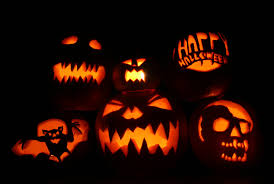A Brief History Lesson on All Hallows Eve
It isn’t surprising that one-fourth of the candy purchased in the US annually is given to trick or treaters. From scary movies to costume parties, Halloween is the most lucrative and commercialized holiday after Christmas. It’s all in good fun, or it would be without the hyper-sexual and culturally-exploitative costumes that continue to sell out nation-wide.
Many people resent the American Halloween season for these reasons, but the holiday itself is actually over 2,000 years old. The time from Oct 31-Nov. 2 is celebrated by many cultures because it marks the change in seasons at the midpoint between the fall equinox and the winter solstice. Following the Fall harvest, communities had to brace themselves for the dark, harsh winter months that usually resulted in many local deaths. This theme of death and despair led them to believe that on November first, the lines between the worlds of the dead and living would be the thinnest.
These ideas can be traced back to the Celtic Samhain, a peagan celebration in which the entire community would light a fire at the end of the harvest, and Druids priests would tell fortunes and commit sacrifices. Since the winter was a time that was associated with fear and death, they relied on the visiting souls to give them guidance about the coming year. During this time, women would look in mirrors with candles and hope to see their future husbands face, or try to see their husbands initials in the fire or in apple peels they threw over their shoulders. These traditions are reminiscent of modern superstitious practices, such as seeing bloody mary in the mirror or bobbing for apples. While the Celtic people thought that the influence of spirits was important during this time, they also feared them. People left money, treats, and plates of food outside their doors to avoid angering spirits or have them enter their homes. Everyone in the community was required to attend the festival as a sacrifice to the Celtic deities, so many wore masks or animal costumes to avoid being recognized by travelling spirits after dark. As time progressed, traditions became more family centralized when people started to host their own fires and feasts. New traditions emerged, such as carving Jack-O Lanterns into turnips (no pumpkins, sorry) and playing tricks before blaming it on fairies.
During the middle ages, the association of Samhain with Wicca and Pagans drove the Roman Catholics to rebrand it as All Saint’s Day and move the celebrations to May 13. It was rebranded as a day that honored those who have been named Saints by the Roman church. Regardless of these efforts, the fires and celebrations continued to occur in October, and the pope was forced to move the celebrations back to their original time. The day was renamed Hallowmas (Nov. 1) and the day before became known as All Hallows Eve. On all Hallows Eve, the poor would knock on doors and offer to pray for the souls of lost loved ones in return for money or soul cakes. I guess you could say they were the original trick or treaters.
Around the world, Oct 3- Nov 2 is considered a time to honor the dead. Originating in Mexico, Dia de Las Muertos (Day of the Dead) is a celebration in honor of lost family members, in which alters are made to ground and guide the dead to and from the spirit world.
So there you have it! Halloween may seem like a Cable TV holiday now, but it actually has a lot of cultural significance around the world. These traditions are important to specific communities and many modern Catholics, Pagans, Wicca, and Mexicans still use this time to connect with their loved ones.



